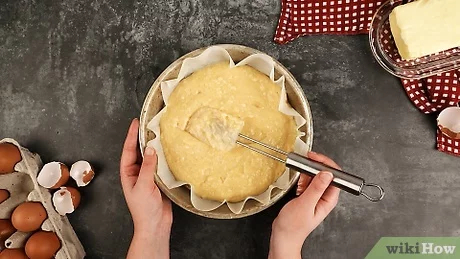How To Make Homemade Salsa

How to make homemade salsa –Salsa, with its vibrant colors, bold flavors, and versatility, is a beloved condiment enjoyed by many. While store-bought options are readily available, there’s nothing quite like the taste of homemade salsa. Making salsa from scratch allows you to customize the flavors, use fresh ingredients, and enjoy a burst of freshness that simply cannot be replicated. Whether you prefer it mild, medium, or fiery hot, making homemade salsa is a rewarding and delicious endeavor.enoughinfo
Homemade salsa is more than just a condiment or a dip—it is a culinary delight that brings a multitude of benefits and importance to your kitchen. Learning how to make homemade salsa is important because it empowers you to take control of the ingredients, flavors, and nutritional value of your condiments. It offers freshness, flavor customization, health benefits, versatility, cost savings, culinary creativity, and a personalized experience. So, dive into the world of homemade salsa and unleash your creativity in the kitchen!
Read Also: How to make a vegan dessert
Discover the Flavors of Freshness: How to Make Homemade Salsa
In this comprehensive guide, we will take you through the step-by-step process of making homemade salsa, from selecting the ingredients to achieving the perfect balance of flavors. Get ready to tantalize your taste buds and elevate your snacking experience with homemade salsa!
Selecting the Ingredients
A. Tomatoes: When it comes to making salsa, ripe tomatoes are a key ingredient. Look for tomatoes that are firm yet slightly yielding to the touch. The best varieties for salsa include Roma, vine-ripened, or heirloom tomatoes. If you can, opt for locally grown or garden-fresh tomatoes for the best flavor.
B. Peppers: The choice of peppers will determine the heat level and flavor profile of your salsa. Jalapeños are a popular choice for a mild to medium heat level, while serrano peppers bring more heat. For those seeking a fiery salsa, habanero peppers are an excellent choice. You can also experiment with other pepper varieties like poblano or Anaheim peppers for a milder flavor.
C. Onions: Onions add depth and a subtle sharpness to salsa. Red onions are commonly used for their vibrant color and slightly milder flavor. If you prefer a sweeter and milder taste, you can opt for Vidalia onions or sweet onions.
D. Garlic: Garlic adds a savory kick to salsa. Choose fresh garlic cloves and adjust the amount based on your preference. If you prefer a milder garlic flavor, use less, and if you love the pungent taste, add more cloves.
E. Fresh Herbs and Spices: Fresh herbs and spices add complexity and freshness to salsa. Cilantro is a popular herb choice that adds a vibrant, citrusy flavor. You can also experiment with other herbs like parsley or basil. Spices like cumin, oregano, and chili powder can enhance the flavor profile of your salsa.
Preparing the Ingredients
A. Tomato Preparation: Start by washing the tomatoes and removing the stems. You can blanch the tomatoes in boiling water for a minute, then transfer them to an ice bath to easily remove the skin. Core and chop the tomatoes into small, uniform pieces, removing the seeds if desired for a less watery salsa.
B. Pepper Preparation: Wash the peppers and remove the stems. If you prefer a milder salsa, remove the seeds and membranes from the peppers. For a spicier kick, leave them intact. Dice the peppers into small pieces, keeping them uniform for even distribution of heat.
C. Onion and Garlic Preparation: Peel and finely chop the onions and garlic cloves. You can adjust the amount of onion and garlic based on your preference for their flavors.
D. Herb and Spice Preparation: Finely chop the fresh herbs like cilantro, parsley, or basil, and set them aside. If using dried spices, measure them out and have them ready for seasoning the salsa.
Read Also: How To Make Homemade Jam
Choosing Your Salsa Style
A. Classic Tomato Salsa: The classic tomato salsa is a versatile and beloved option. It typically includes diced tomatoes, onions, jalapeños, garlic, cilantro, lime juice, and salt. Adjust the ingredients to your taste preferences, balancing the flavors of heat, acidity, and freshness.
B. Roasted Salsa: Roasting the tomatoes, peppers, onions, and garlic before blending them creates a rich and smoky salsa. Preheat your oven, toss the vegetables with olive oil and salt, and roast until they are charred and softened. Allow them to cool before blending them with fresh herbs and spices.
C. Fruit Salsa: Fruit salsas offer a refreshing twist on traditional tomato-based salsas. Incorporate diced fruits like mangoes, pineapples, or peaches for a sweet and tangy salsa. Combine them with peppers, onions, lime juice, and herbs to create a unique flavor combination.
D. Salsa Verde: Salsa verde, or “green salsa,” is made with tomatillos, a tangy and slightly tart fruit that resembles a small green tomato. Remove the husks from the tomatillos and rinse them thoroughly. Roast the tomatillos, along with jalapeños, onions, and garlic, until they are soft and slightly charred. Blend them with cilantro, lime juice, and salt to create a vibrant green salsa with a tangy flavor.
Making the Salsa
A. Basic Salsa Method:
- Combine all the prepared ingredients in a bowl or food processor.
- If using a bowl, finely chop the ingredients and mix them together. For a smoother texture, use a food processor or blender.
- Blend the ingredients to your desired consistency. For a chunky salsa, pulse the ingredients a few times. For a smoother texture, blend until smooth.
- Taste the salsa and adjust the flavors by adding more salt, lime juice, or spices according to your preference.
B. Blending vs. Chunky Salsa: Decide whether you prefer a smooth, blended salsa or a chunkier texture with distinct pieces of ingredients. Experiment with different blending times and techniques to find the consistency that suits your taste.
C. Adjusting the Flavors: Taste your salsa and adjust the flavors as needed. If it’s too acidic, add a pinch of sugar to balance it out. For more heat, add finely chopped jalapeños or a dash of hot sauce. If it needs more freshness, add more lime juice or herbs. Keep tweaking until you achieve the perfect balance of flavors.
D. Storing and Serving Suggestions: Transfer the salsa to a clean, airtight jar or container. It can be stored in the refrigerator for up to one week. Before serving, allow the salsa to sit for at least 30 minutes to let the flavors meld together. Serve it as a dip with tortilla chips, as a topping for tacos, burritos, or grilled meats, or incorporate it into your favorite recipes.
Read Also: How To Create A Meal Plan For Weight Loss
Salsa Variations and Flavor Enhancements
A. Adding Heat: To increase the heat level of your salsa, experiment with hotter pepper varieties like habanero or add a pinch of cayenne pepper. Remember to handle spicy ingredients with caution and use gloves when chopping hot peppers to avoid skin irritation.
B. Sweet and Tangy Twists: Incorporate diced fruits like mangoes, pineapples, or peaches to add a touch of sweetness and tanginess to your salsa. The natural sweetness of the fruits will balance the heat and acidity of the other ingredients.
C. Herbs and Spices: Experiment with different herbs and spices to customize the flavor of your salsa. Cilantro, lime juice, cumin, oregano, or even a hint of cinnamon can add depth and complexity to the salsa.
D. Texture and Crunch: For added texture and crunch, consider including ingredients like corn kernels, black beans, or diced avocado. These additions provide a pleasant contrast to the softness of the tomatoes and peppers.
Tips for Success
A. Balancing Flavors: Taste your salsa as you go and make adjustments to achieve the desired balance of flavors. Keep in mind that the flavors will continue to develop as the salsa sits, so be mindful of the intensity of spices and acidity.
B. Adjusting Heat Levels: To control the heat level, remember that the seeds and membranes of peppers contain most of the heat. Remove them for milder salsa or leave them in for spicier versions. You can also deseed and devein the peppers and add them gradually to achieve the desired heat level.
C. Handling Spicy Ingredients: When working with hot peppers, protect your hands by wearing gloves or using a plastic bag as a barrier. Avoid touching your face or eyes while handling spicy ingredients
Serving and Enjoying Your Homemade Salsa
A. Salsa Pairings and Uses: Homemade salsa is incredibly versatile and can be used in various ways. Serve it as a dip with tortilla chips, vegetable sticks, or pita bread. Use it as a topping for tacos, burritos, quesadillas, or grilled meats. Incorporate it into dishes like enchiladas, fajitas, or scrambled eggs for an extra burst of flavor.How to make homemade salsa
B. Salsa Storage and Shelf Life: Store your homemade salsa in a clean, airtight container in the refrigerator. It will typically last for about a week, but its flavor and texture may change over time. If you’re making a large batch, consider freezing it in smaller portions for longer storage.
C. Salsa Serving Suggestions: When serving salsa, consider presenting it in a colorful bowl or dish to enhance its visual appeal. Garnish it with a sprig of fresh cilantro or a squeeze of lime juice for a pop of freshness. Provide a variety of dippers, such as tortilla chips, vegetable sticks, or toasted pita bread, to accommodate different preferences.
D. Creative Ways to Use Leftover Salsa: If you have leftover salsa, get creative with how you use it. Use it as a marinade for chicken or fish, mix it into pasta or rice dishes, or incorporate it into homemade dressings and sauces. Salsa can add a flavorful kick to many recipes, so don’t let it go to waste.
Read Also: How To Make A Homemade Pizza From Scratch
FAQs & Answers
Q: How long can homemade salsa be stored?
Q: Can I adjust the spiciness of the salsa?
A: Yes, you can adjust the spiciness of your homemade salsa. The heat level primarily depends on the type and amount of peppers you use. To make the salsa milder, remove the seeds and membranes from the peppers before chopping them. Conversely, if you prefer a spicier salsa, keep the seeds and membranes or add hotter pepper varieties.
Q: Can I use canned tomatoes instead of fresh tomatoes?
A: While fresh tomatoes are typically recommended for the best flavor and texture, you can use canned tomatoes as a substitute. Opt for high-quality canned tomatoes without added seasonings or preservatives. Drain the canned tomatoes before using them in your salsa to avoid excess liquid. Keep in mind that the taste and texture of the salsa may vary slightly when using canned tomatoes.
Q: How do I prevent my salsa from becoming too watery?
A: To prevent salsa from becoming watery, you can take a few steps. First, remove the seeds and excess juice from the tomatoes before dicing them. Additionally, you can drain the diced tomatoes in a colander for a few minutes to remove excess liquid. If your salsa still turns out watery, you can strain it through a fine-mesh sieve to remove any excess liquid before serving.
Q: Can I make salsa ahead of time for a party or gathering?
A: Yes, you can make salsa ahead of time for a party or gathering. In fact, allowing the flavors to meld together for a few hours or overnight can enhance the taste of the salsa. Store it in the refrigerator in an airtight container until you’re ready to serve. Just remember to give it a stir before serving to distribute the flavors evenly.
Q: Can I substitute ingredients in the salsa recipe?
A: Yes, you can substitute ingredients in the salsa recipe to suit your taste preferences or dietary restrictions. For example, if you don’t like cilantro, you can replace it with parsley or another fresh herb. You can also adjust the types and quantities of peppers used to control the heat level. Feel free to experiment and customize the recipe according to your liking.
Q: Can I make a large batch of salsa and can it for long-term storage?
A: Yes, you can make a large batch of salsa and can it for long-term storage. Canning salsa involves using sterilized jars, boiling water bath processing, and following proper canning techniques to ensure safety and shelf stability. It’s important to follow a reputable canning recipe and guidelines to prevent the growth of harmful bacteria. Consult canning resources or refer to official canning guides for detailed instructions on the canning process.
Q: Can I use salsa as a marinade?
A: Yes, salsa can be used as a marinade for various proteins like chicken, fish, or tofu. The acidity and flavors in salsa can help tenderize and infuse the protein with delicious flavors. Marinate the protein in salsa for at least 30 minutes to a few hours, depending on the thickness and texture of the protein, before cooking it.
Q: Can I make a fruit salsa instead of a tomato-based salsa?
A: Absolutely! Fruit salsas offer a refreshing and unique twist to traditional tomato-based salsas. You can incorporate diced fruits like mangoes, pineapples, peaches, or strawberries into your salsa. Combine them with peppers, onions, cilantro, lime juice, and other complementary ingredients to create a fruity and flavorful salsa. Adjust the sweetness and tanginess by adding a touch of honey or a squeeze of citrus juice. Fruit salsas are particularly delicious with grilled meats, seafood, or as a refreshing topping for salads.
Q: Can I use dried herbs and spices instead of fresh ones?
A: While fresh herbs and spices generally provide the best flavor, you can use dried herbs and spices as a substitute in salsa. Keep in mind that the flavor profile may be slightly different, as dried herbs and spices tend to be more concentrated. Use approximately half the amount of dried herbs compared to fresh ones. If using dried spices, make sure they are still fresh and fragrant for optimal flavor.
Q: How can I make a salsa less tangy?
A: If you find your salsa to be too tangy, you can balance the acidity by adding a pinch of sugar or a sweetener of your choice. Start with a small amount and taste as you go until the desired level of tanginess is achieved. Another option is to incorporate sweeter ingredients like diced fruits or roasted vegetables to mellow out the tanginess.
Q: Can I make a mild salsa for those who are sensitive to spicy foods?
A: Absolutely! To make a mild salsa, choose mild peppers like bell peppers or use only a small amount of a milder variety like Anaheim peppers. Remove the seeds and membranes from the peppers, as they contain most of the heat. You can also balance the flavors with sweeter ingredients like tomatoes or fruit, and adjust the amount of spicy seasonings to create a milder salsa that everyone can enjoy.
Q: Can I make a salsa without onions or garlic?
A: Yes, you can omit onions and garlic from your salsa if you prefer. While they add depth and flavor to the salsa, it is still possible to create a delicious salsa without them. You can focus on other ingredients like tomatoes, peppers, herbs, and spices to create a flavorful and onion-garlic-free salsa. Alternatively, you can experiment with substitutes like shallots or scallions for a milder onion flavor.
Q: Can I make a salsa without cilantro?
A: Certainly! If you’re not a fan of cilantro or have an aversion to it, you can omit cilantro from your salsa. Instead, consider using other fresh herbs like parsley, basil, or mint to add a different flavor dimension. Alternatively, you can enhance the flavors with additional spices or citrus juices. Feel free to customize the salsa according to your taste preferences.
Read Also: How To Cook Scrambled Eggs (Step By Step)
Conclusion
Making homemade salsa is a culinary adventure that allows you to savor the freshness and flavors of your favorite ingredients. Whether you prefer a classic tomato salsa, a smoky roasted version, a fruity twist, or a tangy salsa verde, the possibilities are endless. By selecting the right ingredients, mastering the preparation techniques, and customizing the flavors to your taste, you can create a salsa that perfectly complements your meals or stands alone as a delicious dip. So, grab your cutting board, gather the ingredients, and let your creativity shine in the kitchen. With homemade salsa, you’ll experience the satisfaction of creating a vibrant, flavorful condiment that elevates your snacking and dining experiences. Enjoy the journey of making and savoring the deliciousness of homemade salsa!



